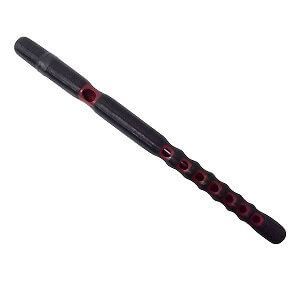Nohkan
 The nohkan (literally, Noh pipe), also known as fue (flute), is a transverse flute made from a type of bamboo known as Pleioblastus simonii. Though traditionally played in the Noh theater, Kabuki, and some shrine festivals, the nohkan can now be seen on concert stages as part of both traditional and nontraditional ensembles. These nontraditional ensembles consist of Eastern and Western groups, including jazz groups and orchestras. Through these experiments and collaborations, this flute has been gaining international attention.
The nohkan (literally, Noh pipe), also known as fue (flute), is a transverse flute made from a type of bamboo known as Pleioblastus simonii. Though traditionally played in the Noh theater, Kabuki, and some shrine festivals, the nohkan can now be seen on concert stages as part of both traditional and nontraditional ensembles. These nontraditional ensembles consist of Eastern and Western groups, including jazz groups and orchestras. Through these experiments and collaborations, this flute has been gaining international attention.
The nohkan is a unique instrument in both construction and sound. The nodo (throat), a thin bamboo tube placed between the mouth hole and first finger hole, disrupts the instrument’s natural acoustics. Therefore, it is unable to play a diatonic scale as heard in Western music and cannot play an octave.1 Its performance techniques include creating shakuhachi-like white noise by blowing into the mouth hole with excessive and forceful air,2 using percussive breath marks to indicate the beats, and playing melodic lines to color the text of the chanters.